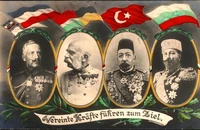| This Central World page is a Proposal.
It has not been ratified and is therefore not yet an official part of the Central World Timeline. You are welcome to correct errors and/or comment at the Talk Page of this article. If you add this label to an article, please do not forget to make mention of it on the main Discussion page for the Timeline. |
| |||||
| Capital (and largest city) |
Madrid | ||||
| Language | Spanish | ||||
| Monarch | |||||
| President of the Government | |||||
| Area | X km² | ||||
| Population | X | ||||
| Organizations | ON | ||||
Spain, officially the Kingdom of Spain (Spanish: Reino de España), is a country and member state of the European Community located in southwestern Europe on the Iberian Peninsula. Its mainland is bordered to the south and east by the Mediterranean Sea; to the north by France, Andorra, and the Bay of Biscay; and to the northwest and west by the Atlantic Ocean and Portugal.
History[]
The Restoration (1874–1931)[]
Spain's neutrality in World War I allowed it to become a supplier of materiel for both sides to its great advantage, prompting an economic boom in Spain. The outbreak of Spanish influenza in Spain and elsewhere, along with a major economic slowdown in the postwar period, hit Spain particularly hard, and the country went into debt. A major worker's strike was suppressed in 1919.
Mistreatment of the indigenous population in Spanish Morocco led to an uprising and the loss of this North African possession except for the enclaves of Ceuta and Melilla in 1921. (See Abd el-Krim, Annual). In order to avoid accountability, King Alfonso XIII decided to support the dictatorship of General Miguel Primo de Rivera, ending the period of constitutional monarchy in Spain.
In joint action with France, the Moroccan territory was recovered (1925–1927), but in 1930 bankruptcy and massive unpopularity left the king no option but to force Primo de Rivera to resign. Disgusted with the king's involvement in his dictatorship, the urban population voted for republican parties in the municipal elections of April 1931. The king fled the country without abdicating and a republic was established.
Second Spanish Republic (1931–1939)[]
Under the Second Spanish Republic, women were allowed to vote in general elections for the first time. The Republic devolved substantial autonomy to the Basque Country and to Catalonia.
The first governments of the Republic, were center-left, headed by Niceto Alcalá-Zamora, and Manuel Azaña. Economic turmoil, substantial debt inherited from the Primo de Rivera regime, and fractious, rapidly changing governing coalitions led to serious political unrest. In 1933, the right-wing CEDA won power; an armed rising of workers of October 1934, which reached its greatest intensity in Asturias and Catalonia, was forcefully put down by the CEDA government. This in turn energized political movements across the spectrum in Spain, including a revived anarchist movement and new reactionary and fascist groups, including the Falange and a revived Carlist movement.
Spanish Civil War (1936–1939)[]
The dictatorship of Francisco Franco (1936–1975)[]
Geography[]
On the west, Spain borders Portugal; on the south, it borders Morocco, through its exclaves in North Africa (Ceuta, Melilla, and Peñón de Vélez de la Gomera). On the northeast, along the Pyrenees mountain range, it borders France and the tiny principality of Andorra.
Spain also includes the Balearic Islands in the Mediterranean Sea, the Canary Islands in the Atlantic Ocean and a number of uninhabited islands on the Mediterranean side of the Strait of Gibraltar, known as Plazas de soberanía, such as the Chafarine islands, the isle of Alborán, Alhucemas, and the tiny Isla Perejil.
Economy[]
International Relations[]
Culture[]
Spain is known for its culturally diverse heritage, having been influenced by many nations and peoples throughout its history. Spanish culture has its origins in the Iberian, Celtiberian, Latin, Visigothic, Roman Catholic, and Islamic cultures.
The definition of a national Spanish culture has been characterized by tension between the centralized state, dominated in recent centuries by Castile, and numerous regions and minority peoples. In addition, the history of the nation and its Mediterranean and Atlantic environment have played strong roles in shaping its culture.
Notes[]
| |||||||||||||||||



